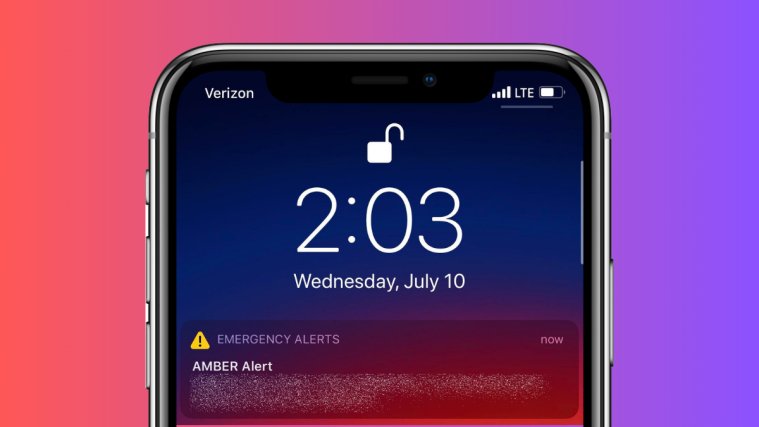iOS 16 has been out in beta for some time now and we’ve already seen glimpses of what Apple’s new mobile operating system has to offer both in visual and functional terms. One feature that many are anticipating with this release is the possibility of an Always-on Display, a feature that has been on Android phones for half a decade now.
In case you didn’t know, Always-on Display is a prominent option on phones with OLED screens. When enabled, you get a glimpse of what’s on your Lock Screen like date, time, and any pending notifications. But is this feature coming to iOS 16? That’s what we’ll be talking about in this post.
Related: Does iOS 16 Have Interactive Widgets?
Is Always On Display available on iOS 16?
While Apple Watches have had an always-on display since 2019, the feature made its debut on the iPhone 14 Pro and iPhone 14 Pro Max. Both these devices come with OLED LTPO ProMotion displays whose refresh rates can vary from 1Hz to 120Hz. Because of such low refresh rates, the iPhone 14 Pro can display a darker version of your Lock Screen background with necessary info to glance at without needing to tap on the screen.

The Always On Display gets activated when a user locks the screen using the Side button. When this mode is active, some elements of the wallpaper go dark while others are faded, which means you’ll still see parts of your wallpaper even on the always-on screen. The feature works like sort of a photo filter that tones down the colors of your wallpaper and darkens the overall picture as is evident from the image above.
Along with the Depth effect option on iOS 16, Always On Display should with any picture that a user sets as their wallpaper, not just Apple’s own backgrounds. Although the new Always On Display feature works on iPhone 14 Pro models running on iOS 16, it isn’t a feature related to iOS 16 but is specific only to the iPhone 14 Pro and iPhone 14 Pro Max.
Related: Does iOS 16 Have Split Screen? All You Need to Know
Which iPhones will readily support Always On Display?
Always On Display is currently available only on iPhone 14 Pro and iPhone 14 Pro Max, both of which come with OLED LTPO ProMotion displays. These displays have adaptive refresh rates that can go up as high as 120Hz and as low as 1Hz. Because of having such low refresh rates, the display on both these devices will be able to show a static lock screen that has the date, time, weather, and information from any other widgets that you’ve added to the Lock Screen.
Will Always On Display be available for older iPhones?
As of now, September 08, 2022, Apple hasn’t revealed if it plans to release the AOD feature for previous models. If you ask us, we think it is highly unlikely then will release it for iPhone 13, 12, 11, and older devices. Point to be noted, even the newly released iPhone 14 and iPhone 14 Plus do not have Always On Display. So, we don’t think older iPhones will get Always On Display.
While low refresh rates can be beneficial for saving battery life, the most important requirement for an always-on screen is whether or not the display underneath supports it. For always-on mode to work, your phone needs to have an OLED display which, unlike a traditional LCD, can deliver the deepest blacks and lower brightness. Since the diodes in an OLED display light up only when there’s a subject to show, the part of your screen that’s completely in black remains unlit, thus saving battery.
Apple’s existing iPhones come with Super Retina / XDR displays that feature OLED technology. The iPhones that support them are:
- iPhone X
- iPhone XS / Max
- iPhone 11 Pro / Max
- iPhone 12 / 12 mini / 12 Pro / 12 Pro Max
- iPhone 13 / 13 mini / 13 Pro / 13 Pro Max
Although this constitutes a significant bunch of iPhones, it’s not certain whether all of these iPhone models will feature an always-on display in the future. Among the ones listed above, the iPhone 13 Pro and iPhone 13 Pro Max stand a high chance of getting this feature as both the devices offer advanced ProMotion displays that support a long range of refresh rates that can toggle anywhere between 10Hz and 120Hz.
While a 10Hz display would consume more energy than a 1Hz display, the margins are quite thin. The low refresh rates make the iPhone 13 Pro lineup contenders for getting the always-on display if Apple decides to release it through an iOS 16 update later.
That’s all there is to know about Always On Display on iOS 16.
RELATED
- iOS 16: List of Widgets You Can Add to iPhone Lock Screen
- Where Can You Add Widgets on iOS 16 Lock Screen?
- How to Enable Lockdown Mode on iOS 16
- iOS 16 Theme: How to Access and Change Themes for Lock Screen on iPhone






It is a little Ridiculous that AOD is just being introduced now when I had it 5 Years ago on my Note8. It is the one thing I miss most on my iPhone 13 Pro Max and when I heard rumors it would be on it, I was excited. This is very disappointing to think that a Device that is SOOO Advanced is missing this simple and useful feature. The iPhone 13 Pro Display can support it and I would gladly take the Battery hit to have it again.
Apple should implement the AOD even on older iPhone with OLED display and they should include Tahoe so if the user’s thinks it’s consume battery he or she can turn it off…… giving the users to choose not they’re own choice.